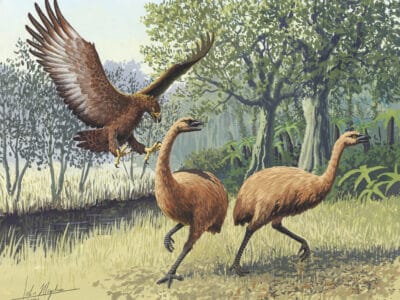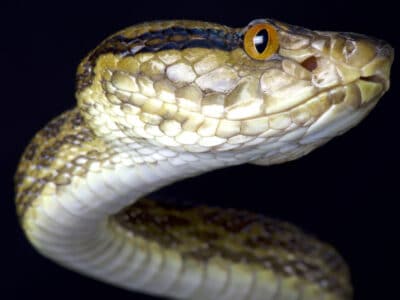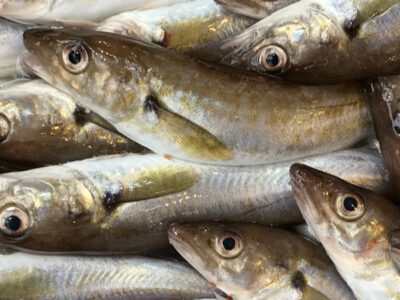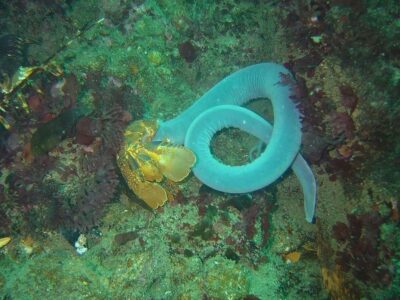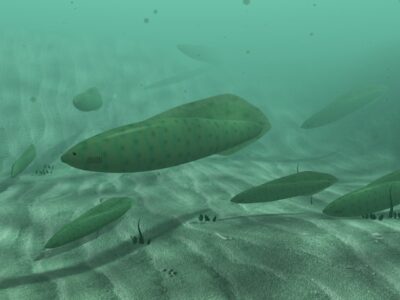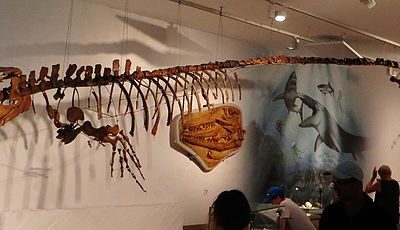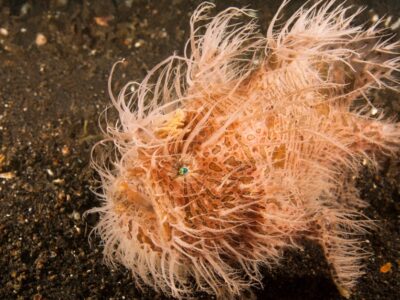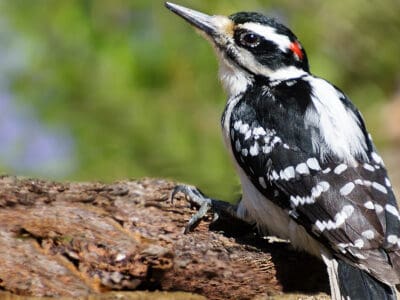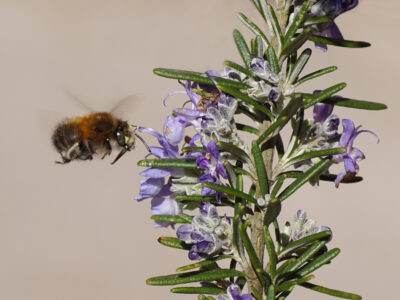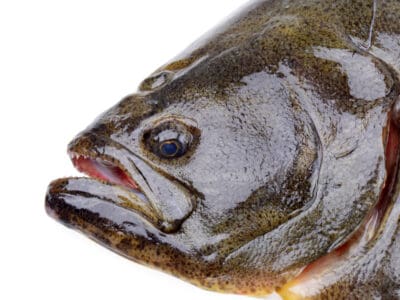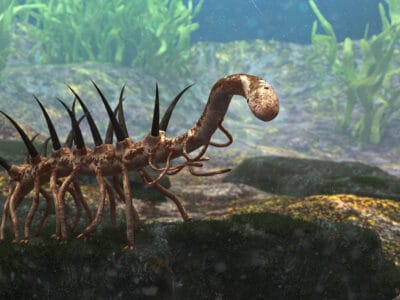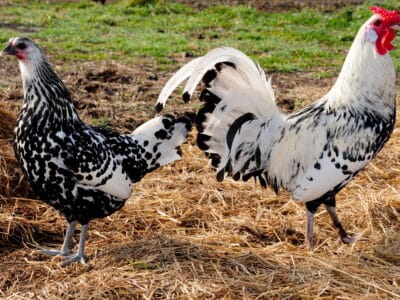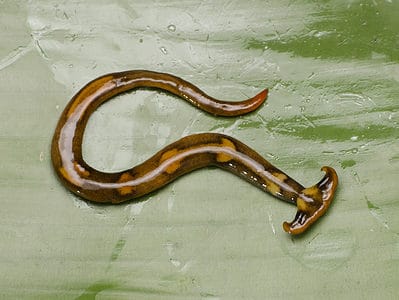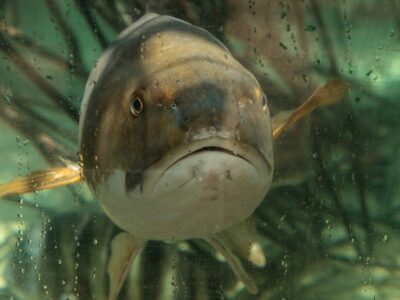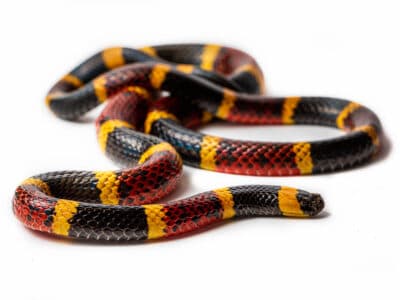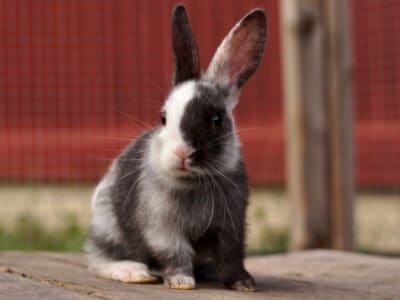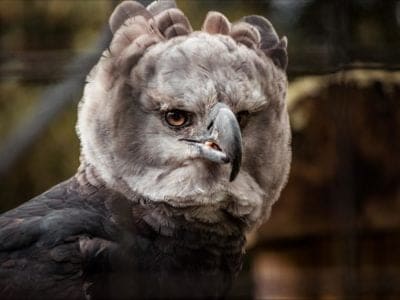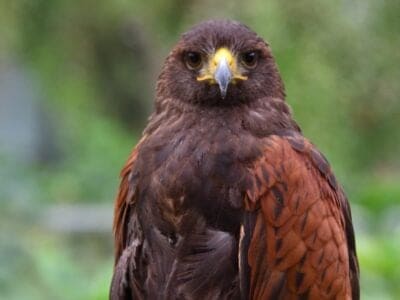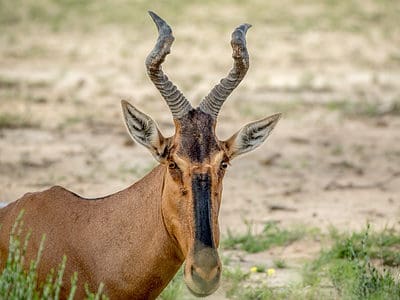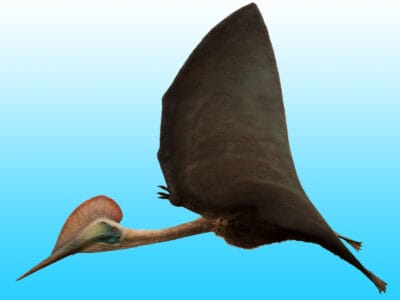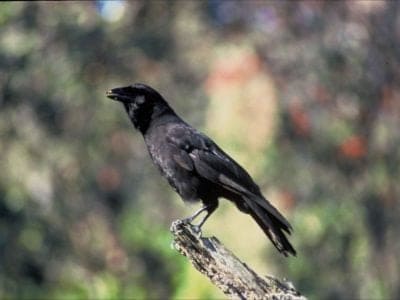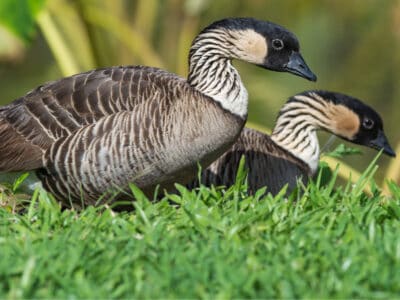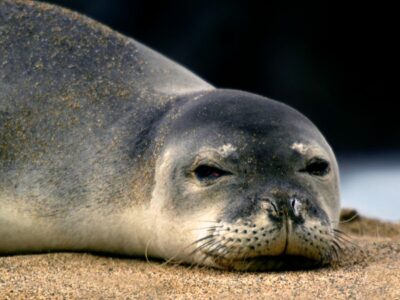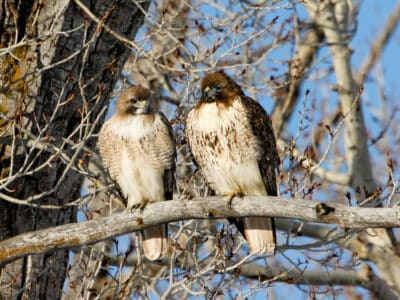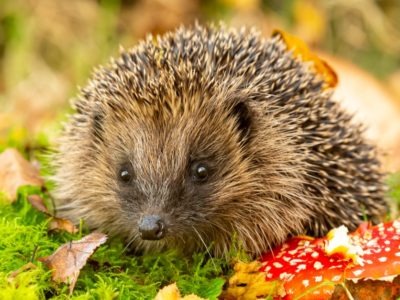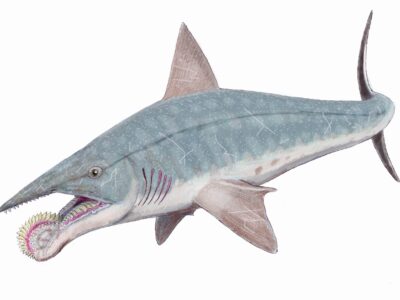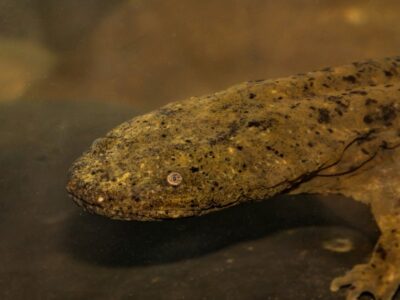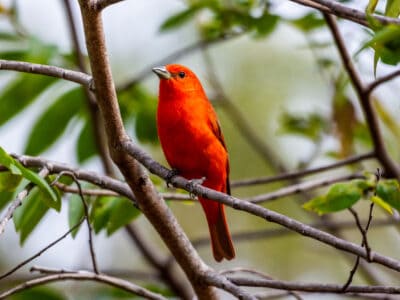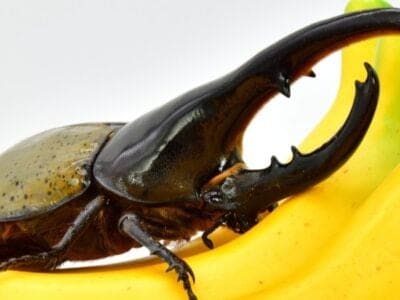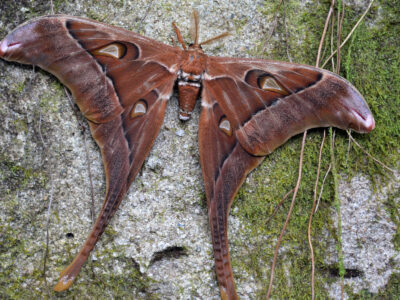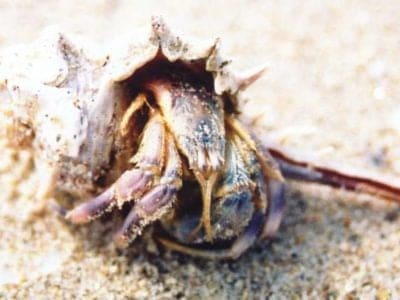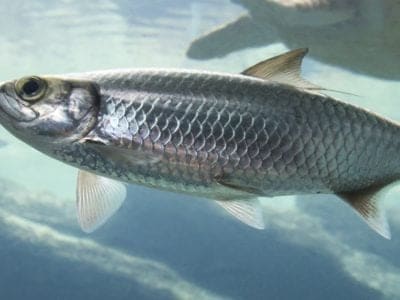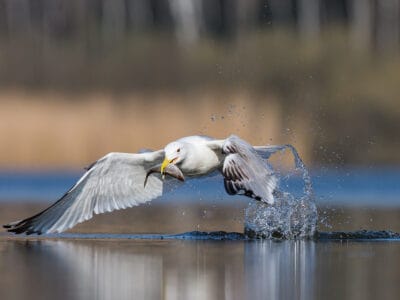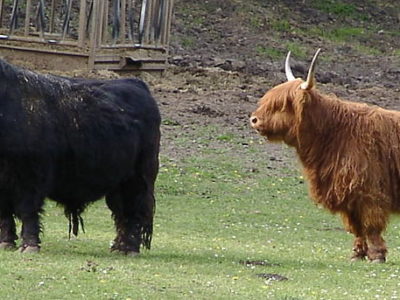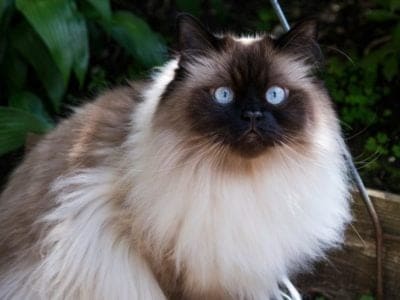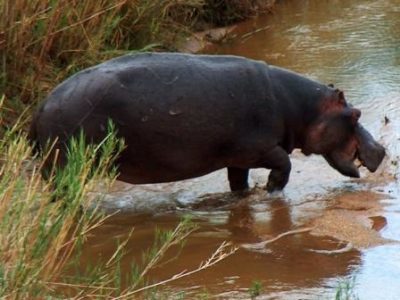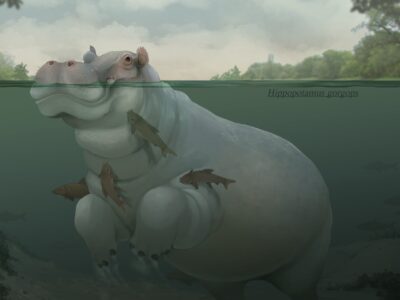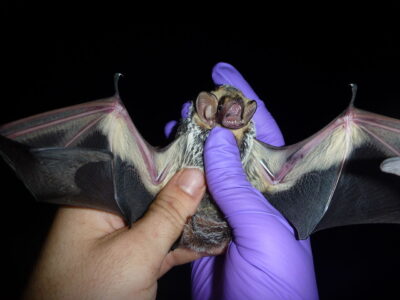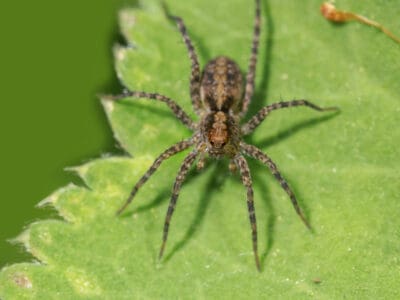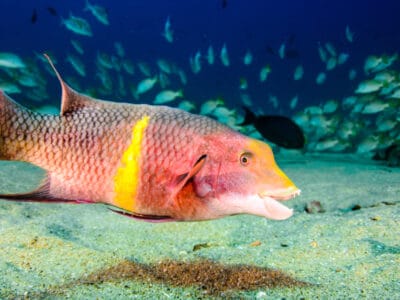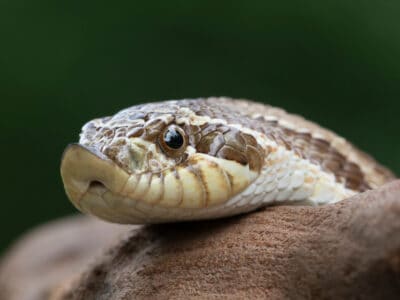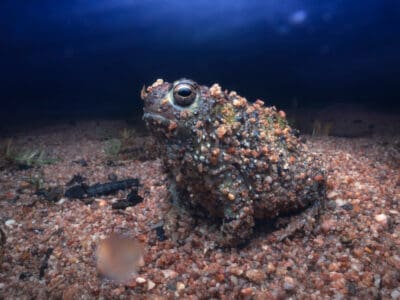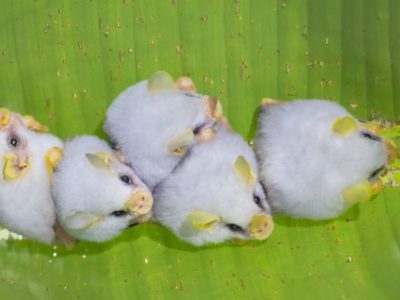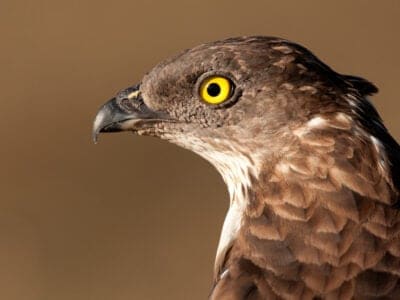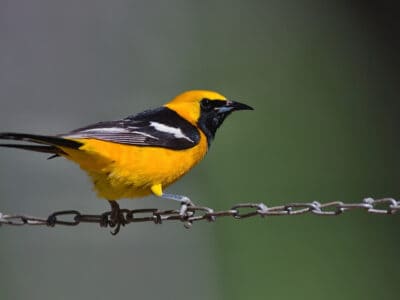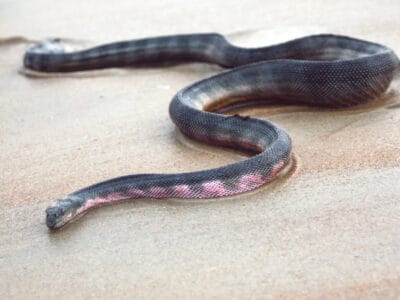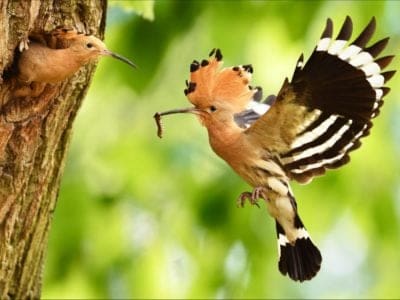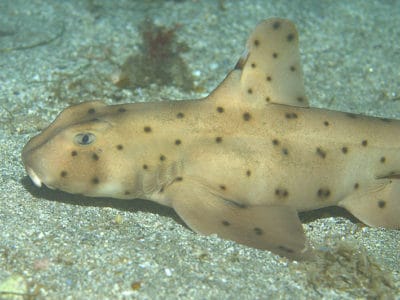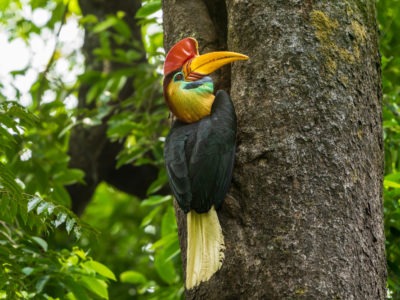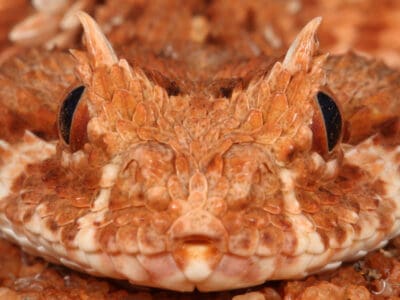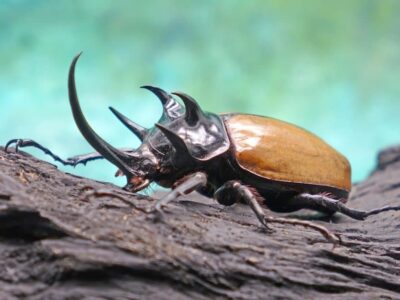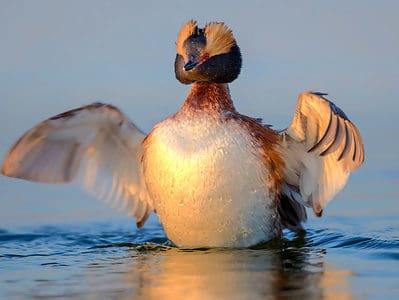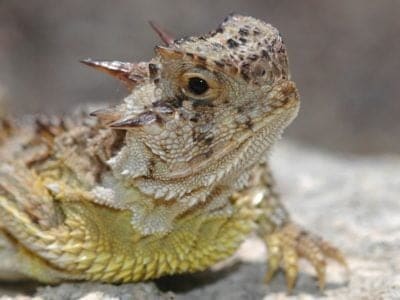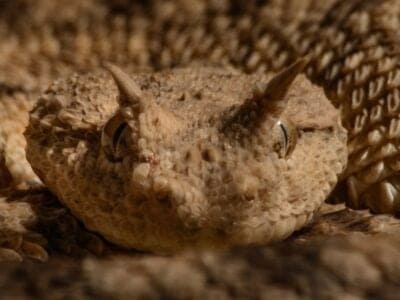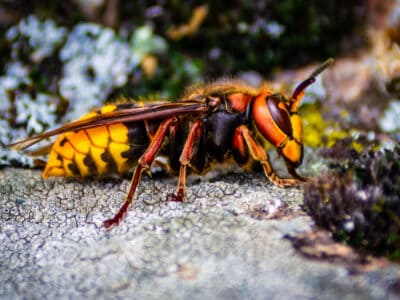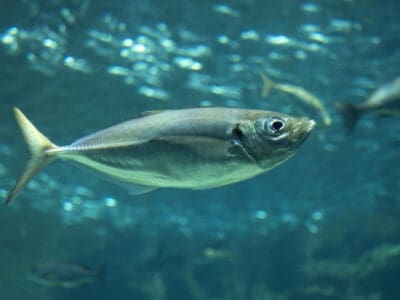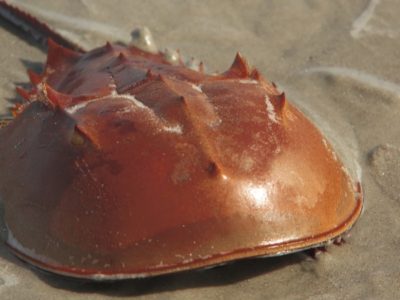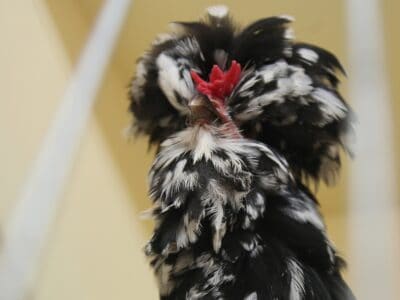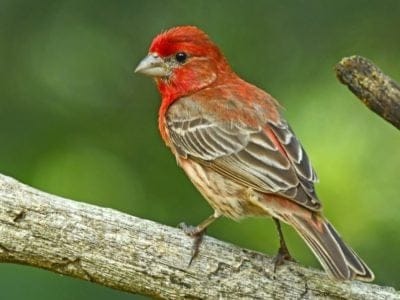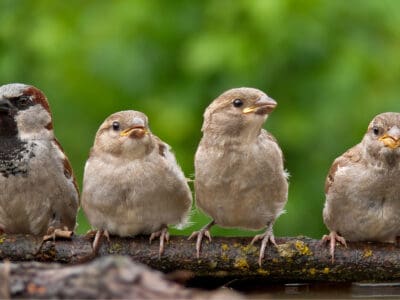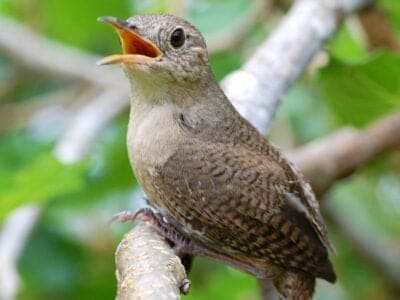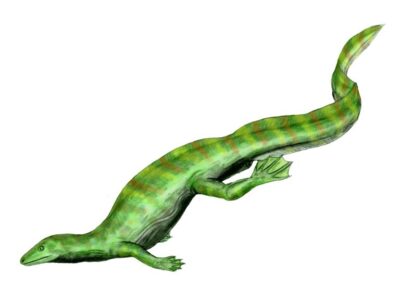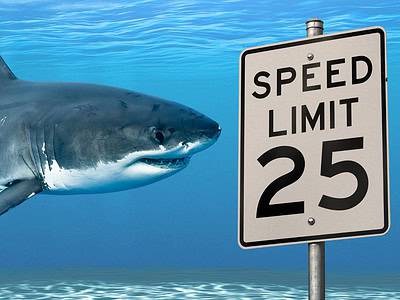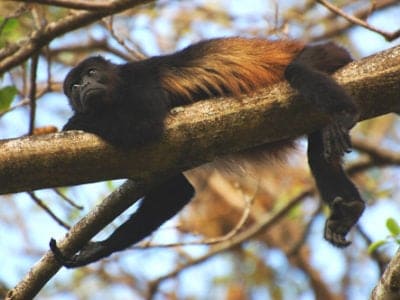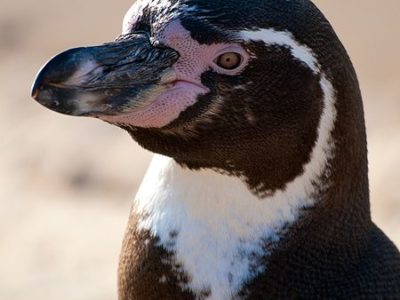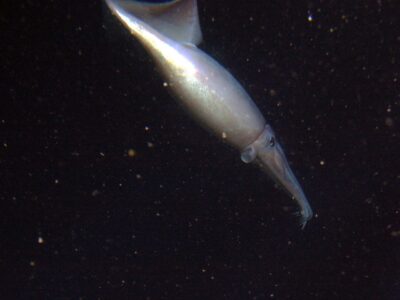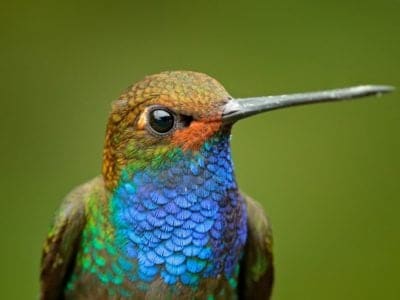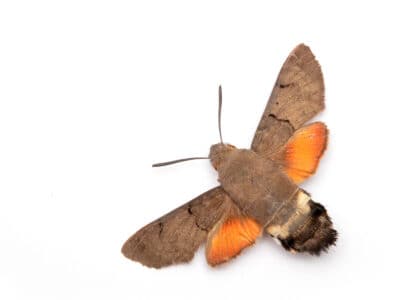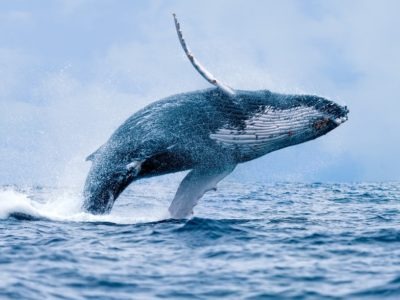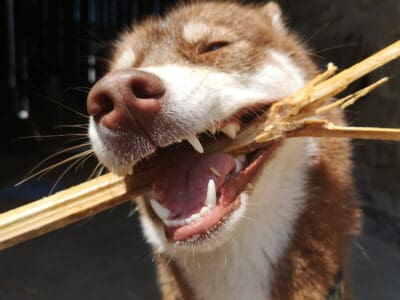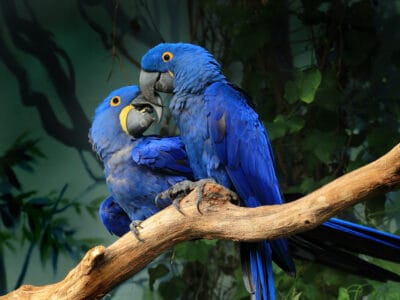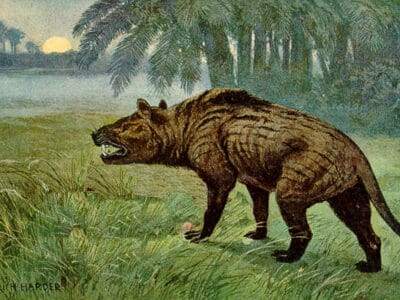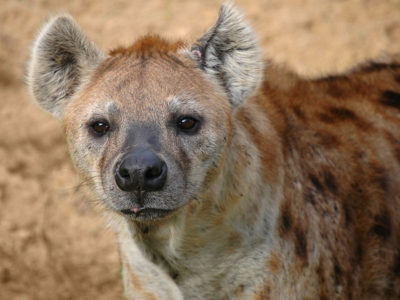Read below for information on 105 different animals that start with the letter H, from hammerhead sharks to hyenas. Hyenas are the most popular letter H animal. The least popular are hercules beetles, which at up to 7 inches long are the largest beetle species in the world. Some fun facts about H name animals include:
- The hippopotamus is the world’s deadliest land animal. It is estimated that hippopotamuses kill 500 people a year in Africa.
- Hamsters can run as fast backwards as forwards
- Hummingbirds beat their wings up to 80 times per second.
Jump to any letter
Alphabetical List of Animals That Start with H
- Haast’s Eagle
- Habu Snake
- Haddock
- Hagfish
- Haikouichthys
- Hainosaurus
- Hairy Frogfish
- Hairy Woodpecker
- Hairy-footed Flower Bee
- Halibut
- Hallucigenia
- Hamburg Chicken
- Hammerhead Shark
- Hammerhead Worm
- Hammond’s flycatcher
- Hamster
- Harbor Porpoise
- Harbor Seal
- Hardhead Catfish
- Hare
- Harlequin Coral Snake
- Harlequin Rabbit
- Harp Seal
- Harpy Eagle
- Harrier
- Harris’s Hawk
- Hartebeest
- Hatzegopteryx
- Havamalt
- Havanese
- Havapoo
- Havashire
- Havashu
- Hawaiian Crow
- Hawaiian Goose (Nene)
- Hawaiian Monk Seal
- Hawk
- Hawk Moth Caterpillar
- Hedgehog
- Helicoprion
- Hellbender
- Hepatic Tanager (Red Tanager)
- Hercules Beetle
- Hercules Moth
- Hermit Crab
- Heron
- Herrerasaurus
- Herring
- Herring Gull
- Highland Cattle
- Himalayan
- Hippopotamus
- Hippopotamus gorgops
- Hoary Bat
- Hobo Spider
- Hogfish
- Hognose snake
- Hokkaido
- Holy Cross Frog
- Honduran White Bat
- Honey Badger
- Honey Bee
- Honey Buzzard
- Hooded Oriole
- Hooded Seal
- Hook-Nosed Sea Snake
- Hoopoe
- Horgi
- Horn Shark
- Hornbill
- Horned Adder
- Horned Beetle
- Horned Grebe
- Horned Lizard
- Horned Viper
- Hornet
- Horse
- Horse Mackerel
- Horsefly
- Horseshoe Crab
- Houdan Chicken
- House Finch
- House Sparrow (English Sparrow)
- House wren
- Housefly
- Hovasaurus
- Hovawart
- How Fast Are Great White Sharks? See How They Compare to the Ocean’s Fastest Animals
- Howler Monkey
- Human
- Humboldt Penguin
- Humboldt Squid
- Hummingbird
- Hummingbird Hawk-Moth
- Humpback Whale
- Huntaway
- Huntsman Spider
- Huskador
- Huskita
- Husky
- Husky Jack
- Huskydoodle
- Hyacinth Macaw
- Hyaenodon
- Hyena
Animals that Start with H
Haast’s Eagle
- Kingdom
- Animalia
- Phylum
- Chordata
- Class
- Aves
- Order
- Accipitriformes
- Family
- Accipitridae
- Genus
- Hieraaetus
- Scientific Name
- Hieraaetus moorei
Fun Fact: The Haast's eagle was the largest eagle to have ever existed.
The Haast’s eagle (Hieraaetus moorei) is a species of eagle that was once abundant on the South Island of New Zealand. Also known as the giant eagle, Haast’s eagle holds the title of the largest eagle to have ever lived. The species went extinct around 1400, and experts link its disappearance to the arrival of […] Read More
Habu Snake
- Kingdom
- Animalia
- Phylum
- Chordata
- Class
- Reptilia
- Order
- Squamata
- Family
- Viperidae
- Genus
- Protobothrops or Trimeresurus
- Scientific Name
- Protobothrops flavoviridis
Fun Fact: Unlike most pit vipers, the habu snake lays eggs instead of giving birth to live young.
The habu snake is most famous for its use in “medicinal” habu sake (habushu), or snake wine. The habu snake, also called the Kume Shima or Okinawa Habu, is a venomous snake from Japan. Its bite can cause serious injury, though it is not usually fatal. Habu snake numbers are decreasing, perhaps due to habitat […] Read More
Haddock
- Kingdom
- Animalia
- Phylum
- Chordata
- Class
- Actinopterygii
- Order
- Gadiformes
- Family
- Gadidae
- Genus
- Melanogrammus
- Scientific Name
- Melanogrammus aeglefinus
Fun Fact: The haddock is very popular in both recreational and commercial fishing
The haddock is a deep-sea marine fish, native to the North Atlantic. Haddock is an immensely popular food around the world, perhaps nowhere more so than the United Kingdom, where it’s practically a staple in some local dishes. This fish is closely related to cod, another popular dish. With a firm and slightly sweet taste, […] Read More
Hagfish
- Kingdom
- Animalia
- Phylum
- Chordata
- Class
- Myxini
- Order
- Myxiniformes
- Family
- Myxinidae
Fun Fact: Can use slime to suffocate marine predators or escape capture
Hagfish are widely considered the most disgusting animals in the ocean. Hagfish, also known as slimy eels or slime eels, are so named because they produce slime. However, they are not actually eels but eel-like fish that have jawless mouths, like the lampreys. They are important for commercial and food purposes, and their habitat is […] Read More
Haikouichthys
- Kingdom
- Animalia
- Phylum
- Chordata
- Order
- Myllokunmingiida
- Family
- Myllokunmingiidae
- Genus
- Haikouichthys
- Scientific Name
- Haikouichthys ercaicunensis
Fun Fact: Haikouichthys was the first animal to develop a well-defined head
The Haikouichthys is an extinct animal closely related to present-day hagfishes and lampreys. It was first identified in 1999 and is a member of the Myllokunmingiidae family, a group of prehistoric jawless fish known to have existed during the Cambrian period (518 million years ago). Well-preserved fossils of this animal are hard to come by […] Read More
Hainosaurus
- Kingdom
- Animalia
- Phylum
- Chordata
- Class
- Reptilia
- Order
- Squamata
- Family
- Mosasauroidea
- Genus
- Hainosaurus
Fun Fact: The hainosaurus was named after the Hainaut province of Belgium where the first specimen was discovered.
Introduction The hainosaurus is an extinct genus of marine reptiles that were one of the largest members of the mosasaur family. They were around from the Campanian to the Maastrichtian age during the Cretaceous Period around 85 to 60 million years ago, in the oceans of Europe and Asia. The hainosaurus was a carnivore and […] Read More
Hairy Frogfish
- Kingdom
- Animalia
- Phylum
- Chordata
- Class
- Actinopterygii
- Order
- Lophiiformes
- Family
- Antennariidae
- Genus
- Antennarius
- Scientific Name
- Antennarius striatus
Fun Fact: Hairy frogfish can eat prey as large as themselves by swallowing them whole.
The hairy frogfish (Antennarius striatus), also known as the striated frogfish, is a species of anglerfish found in tropical and subtropical waters throughout every body of water except for the Arctic and the Mediterranean Sea. They inhabit rocky areas and coral reefs, where they use mimicry and camouflage to blend with their environments. This fish […] Read More
Hairy Woodpecker
- Kingdom
- Animalia
- Phylum
- Chordata
- Class
- Aves
- Order
- Piciformes
- Family
- Picidae
- Genus
- Leuconotopicus
- Scientific Name
- Leuconotopicus villosus
Fun Fact: They are natural pest controls
Listen for their energetic tapping noises. The hairy woodpecker is a small, robust bird that produces explosive calls and energetic tapping noises. You will often find them busily foraging the branches of large trees and can quickly spot them by their sounds and bold black and white patterns. These birds are endemic to North America, […] Read More
Hairy-footed Flower Bee
- Kingdom
- Animalia
- Phylum
- Arthropoda
- Class
- Insecta
- Order
- Hymenoptera
- Family
- Apidae
- Genus
- Anthophora
- Scientific Name
- Anthophora plumipes
Fun Fact: N/A
Welcome to the fascinating world of the hairy-footed flower bee (Anthophora plumipes), a tiny but mighty pollinator that is a true friend to many flowers. This little bee may be small in size, but it plays a big role in maintaining the health and beauty of the natural world. The hairy-footed flower bee is a […] Read More
Halibut
- Kingdom
- Animalia
- Phylum
- Chordata
- Class
- Amniota
- Order
- Pleuronectiformes
- Family
- Pleuronectidae
- Genus
- Hippoglossus
- Scientific Name
- stenolepis
Fun Fact: The word "halibut" is comes from haly meaning "holy" and butte meaning flat fish due to its popularity on Catholic holy days.
Halibut Summary The halibut is a type of flatfish or flounder, with the common name “halibut” referring to any one of three flatfish species. The Atlantic halibut is the world’s largest flatfish species, but it has been overfished. Halibut is one of the main fish traditionally used for making fish and chips. Historically, it has […] Read More
Hallucigenia
- Kingdom
- Animalia
- Phylum
- Arthropoda
- Class
- Xenoturbellida
- Order
- Hallucishaniids
- Family
- Hallucigeniidae
- Genus
- Hallucigenia
- Scientific Name
- Hallucigenia sparsa
Fun Fact: The position of the Hallucigenia's head puzzled scientists for several years
Hallucigenia is a worm-like creature that lived about 500 million years ago during the Cambrian Era. It belongs to a family of organisms known as lobopodians, believed to be ancestors of present-day velvet worms, water bears, and arthropods. Fossils of this strange-looking creature have been found in China, Canada, and other locations worldwide. Description and […] Read More
Hamburg Chicken
- Kingdom
- Animalia
- Phylum
- Chordata
- Class
- Aves
- Order
- Galliformes
- Family
- Phasianidae
- Genus
- Gallus
- Scientific Name
- Gallus
Fun Fact: This breed doesn't usually make nests or incubate their own chicks.
The Hamburg Chicken originated in Holland sometime around the 14th century. This chicken is small and matures quickly. Farmers typically consider them good egg producers, primarily for which they are used. 3 Amazing Hamburg Chicken Facts Beautiful feathers: These birds are known for their beautiful feathers, which typically translates to them being very good show […] Read More
Hammerhead Shark
- Kingdom
- Animalia
- Phylum
- Chordata
- Class
- Chondrichthyes
- Order
- Carcharhiniformes
- Family
- Sphyrnidae
- Scientific Name
- Sphyrnidae
Fun Fact: Found in coastal waters around the world!
Hammerhead sharks are best known for their long, rectangular heads. Hammerhead sharks are best known for their long, rectangular heads. These distinctive heads serve multiple purposes, including granting the sharks 360-degree vision as well as better hunting abilities. Hammerhead sharks populate coastal areas and the edges of continental plates. 4 Hammerhead Shark Facts! Lovers of […] Read More
Hammerhead Worm
- Kingdom
- Animalia
- Phylum
- Platyhelminthes
- Class
- Turbellaria
- Order
- Tricladida
- Family
- Geoplanidae
- Genus
- Bipalium
- Scientific Name
- Bipalium fuscatum
Fun Fact: They are sensitive to light and prefer cool, dark, moist areas.
“They possess a neurotoxin called tetrodotoxin, which is also found in pufferfish.” Summary The hammerhead worm (Bipalium fuscatum) is a land flatworm native to Southeast Asia and later introduced to Europe and North America. They hitch a ride on horticultural plants and escape greenhouses, eventually infesting gardens and forests. These worms are an invasive species […] Read More
Hammond’s flycatcher
- Kingdom
- Animalia
- Phylum
- Chordata
- Class
- Aves
- Order
- Passeriformes
- Family
- Tyrannidae
- Genus
- Empidonax
- Scientific Name
- Empidonax hammondii
Fun Fact: “Hammond’s flycatcher has a call known as a sharp peek!”
Hammond’s Flycatcher Summary “Hammond’s flycatcher has a call known as a sharp peek!” Hammond’s flycatcher is a small species of flycatcher native to the western hemisphere. It can be identified by its small bill and long wings, which stand out on its small, round body. They are highly migratory, spending their breeding season in the […] Read More
Hamster
- Kingdom
- Animalia
- Phylum
- Chordata
- Class
- Mammalia
- Order
- Rodentia
- Family
- Cricetidae
Fun Fact: Able to run as quickly backwards as forwards!
Hamsters are small-sized rodents. They are very commonly kept as house pets. However, unlike other rodents, they have short tails. Their legs are stubby with widely-spaced feet, and their ears are small. Hamsters are found in a variety of colors, using grey, yellow, black, white, brown, golden, and red. They exist in a mixture of […] Read More
Harbor Porpoise
- Kingdom
- Animalia
- Phylum
- Chordata
- Class
- Mammalia
- Order
- Artiodactyla
- Family
- Phocoenidae
Fun Fact: Surprisingly, not a dolphin!
A porpoise can swim as fast as 34 mph! There are seven species of porpoise and they are often mistaken for dolphins. These mammals live in bays, rivers, and estuaries in many areas of the world. A porpoise can dive more than 600 feet into the depths of the ocean. 5 Unique Porpoise Facts • Porpoises […] Read More
Harbor Seal
- Kingdom
- Animalia
- Phylum
- Chordata
- Class
- Mammalia
- Order
- Carnivora
- Family
- Phocidae
- Genus
- Phoca
- Scientific Name
- Phoca vitulina
Fun Fact: Harbor seals can dive as deep as 1400 feet
“A Harbor Seal is known as the photogenic seal.” With its round baby-like head, big, curious eyes, and habit of hauling out close, but not too close, to human habitation, harbor seals are the favorite pinnipeds of many humans. That these Northern Hemisphere seals are plentiful overall is another bright spot. They even seem to […] Read More
Hardhead Catfish
- Kingdom
- Animalia
- Phylum
- Chordata
- Class
- Actinopterygii
- Order
- Siluriformes
- Family
- Ariidae
- Genus
- Ariopsis
- Scientific Name
- Ariopsis felis
Fun Fact: The hardhead catfish has a sharp spine near its fin to inject venom
“The hardhead catfish can produce sound by grinding its teeth or vibrating the bones located close to the swim bladder.” Named after the bony plate on the top of the skull, the hardhead catfish is a medium-sized marine predator or omnivore that sifts along the bottom of the ocean, looking for food. It is often […] Read More
Hare
- Kingdom
- Animalia
- Phylum
- Chordata
- Class
- Mammalia
- Order
- Lagomorpha
- Family
- Leporidae
- Genus
- Lepus
- Scientific Name
- Lepus
Fun Fact: Can reach speeds of over 50 mph!
The hare is one of the fastest land mammals in the world. This speed is absolutely critical to its survival. Lacking any other formidable defenses at its disposal, the hare is a small and timid animal that can outrun predators with incredible bursts of speed and endurance. The hare is a very common sight, but […] Read More
Harlequin Coral Snake
- Kingdom
- Animalia
- Phylum
- Chordata
- Class
- Reptilia
- Order
- Squamata
- Family
- Elapidae
- Genus
- Micrurus
- Scientific Name
- Micrurus fulvius
Fun Fact: Red touches yellow kills a fellow, red touches black a friend of Jack.
A female harlequin coral snake can lay four to 13 eggs underground. The Harlequin snake, or Eastern coral snake, is most notable for the black, yellow, and red rings running the length of its body. It lives in the southern United States and Mexico. They are carnivores killing their prey of lizards, insects, frogs, and […] Read More
Harlequin Rabbit
- Kingdom
- Animalia
- Phylum
- Chordata
- Class
- Mammalia
- Order
- Lagomorpha
- Family
- Leporidae
- Genus
- Oryctolagus
- Scientific Name
- Oryctolagus cuniculus
Fun Fact:
Summary A colorful breed based on its coloration and markings, the Harlequin Rabbit originates from France. It comes in two traditional color patterns and typically looks either black and orange or black and white. A well-muscled, medium-sized breed, Harlequin Rabbits make excellent family pets. Although they used to be quite popular, they are now considered […] Read More
Harp Seal
- Kingdom
- Animalia
- Phylum
- Chordata
- Class
- Mammalia
- Order
- Carnivora
- Family
- Phocidae
- Genus
- Pagophilus
- Scientific Name
- Pagophilus groenlandicus
Fun Fact: The harp seal can migrate up to 3,000 miles every year
The harp seal is awkward and clumsy on land. But in the water, it is an elegant swimmer and an expert predator. These are fairly common animals in the oceans of the extreme north. Named after the black harp-shaped markings on the back, the harp seal is a marvel of evolution, thanks to the many […] Read More
Harpy Eagle
- Kingdom
- Animalia
- Phylum
- Chordata
- Class
- Aves
- Order
- Accipitriformes
- Family
- Accipitridae
- Genus
- Harpia
- Scientific Name
- Harpia harpyja
Fun Fact: Talon's the size of a grizzly bear's claws!
The harpy eagle is a fearsome predator, a loyal partner, and a nurturing parent. Residing deep within the rainforests of the Western Hemisphere, the harpy eagle cuts a striking figure. With its black and white colors, the regal crown of feathers, and its long, elegant tail, this species provides an unmistakable sight in its native […] Read More
Harrier
- Kingdom
- Animalia
- Phylum
- Chordata
- Class
- Mammalia
- Order
- Carnivora
- Family
- Canidae
- Genus
- Canis
- Scientific Name
- Canis lupus
Fun Fact: Cheerful, tolerant and sweet-tempered!
These dogs are called hare hounds as they were originally bred to hunt hares. Since then, they have become the ideal first-time dog for families everywhere. Harriers are affectionate, fun-loving and sweet, which is another reason that people love them as much as the Beagle or the English Foxhound. Even though the breeds are incredibly […] Read More
Harris’s Hawk
- Kingdom
- Animalia
- Phylum
- Chordata
- Class
- Aves
- Order
- Accipitriformes
- Family
- Accipitridae
- Genus
- Parabuteo
- Scientific Name
- Parabuteo unicinctus
Fun Fact: Their vision is eight times better than a human's
“Birds of a feather hunt together” Also called the bay-winged hawk, the Harris’s hawk is one of only two species of raptors that go hunting in “packs.” This behavior is thought to be one of the adaptations that helps the bird to successfully capture prey. It also allows them to catch prey larger than a […] Read More
Hartebeest
- Kingdom
- Animalia
- Phylum
- Chordata
- Class
- Mammalia
- Order
- Artiodactyla
- Family
- Bovidae
- Genus
- Alcelaphus
- Scientific Name
- Alcelaphus buselaphus
Fun Fact: Unlike other animals that move towards the water source, hartebeests move to more arid locations after rainfall.
Hartebeest is a large antelope species native to the African continent. It lives in open grasslands, sparsely wooded areas, and savannas. Although once widespread across Africa, the antelope’s population has been on a decline due to habitat destruction and other human activities. 5 Hartebeest Facts During the mating season, males become violent and territorial, and […] Read More
Hatzegopteryx
- Kingdom
- Animalia
- Phylum
- Chordata
- Order
- Pterosauria
- Family
- Azhdarchidae
- Genus
- Hatzegopteryx
- Scientific Name
- Hatzegopteryx thambema
Fun Fact: Hatzegopteryx was one of the largest flying animals to have ever lived.
Hatzegopteryx is an extinct pterosaur genus that lived during the Maastrichtian epoch. This unusually giant creature is one of the biggest flying animals known to have existed. Only one species of this creature is known. The pterosaur had an elongated head (resembling a stork), a fragile long neck, and a small body. It also had […] Read More
Havamalt
- Kingdom
- Animalia
- Phylum
- Chordata
- Class
- Mammalia
- Order
- Carnivora
- Family
- Canidae
- Genus
- Canis
- Scientific Name
- Canis lupus
Fun Fact: These pups need natural oils to keep their skin healthy; bathing them often will dry out their skin, so only wash them when necessary.
The Havamalt is an entertaining little furball resulting from crossbreeding the Havanese and Maltese. They get their loving nature from the Havanese and playful personality from the Maltese. These dogs are so easygoing and are perfect for families with children and other pets. However, they don’t like to be left alone for too long and […] Read More
Havanese
- Kingdom
- Animalia
- Phylum
- Chordata
- Class
- Mammalia
- Order
- Carnivora
- Family
- Canidae
- Genus
- Canis
- Scientific Name
- Canis lupus
Fun Fact: These are the only dogs that are native to Cuba
The Havanese dogs originated in Cuba in the 1500s. With their small and sturdy build, they are fairly affectionate and playful as a breed. They are often welcomed into families for their soft fur, intelligence, and desire to please their loving owners. The lack of shedding and clever mind of the Havanese dog has earned […] Read More
Havapoo
- Kingdom
- Animalia
Fun Fact: The exact appearance of a Havapoo can vary based on whether the genes of its Poodle or Havanese parent are more dominant.
The first Havapoo dog was likely bred within the last 20 or 30 years. Havapoos are a mixed, or hybrid, breed. They have one Poodle (standard or miniature) parent and one Havanese parent. The first Havapoo was likely bred within the last 20 or 30 years. Havapoos are not super high-energy dogs, like many other […] Read More
Havashire
- Kingdom
- Animalia
- Phylum
- Chordata
- Class
- Mammalia
- Order
- Carnivora
- Family
- Canidae
- Genus
- Canis
- Scientific Name
- Canis lupus
Fun Fact: Both of the Havashire’s parent breeds were very popular among the upper classes.
The Havashire’s parent breeds, the Yorkshire Terrier and Havanese, were favorites of upper class owners in the United Kingdom and Cuba, respectively. The Havashire is a small and cuddly lapdog that was bred from a cross between a Yorkshire Terrier and a Havanese. It is a relatively newer hybrid creation and was most likely developed […] Read More
Havashu
- Kingdom
- Animalia
- Phylum
- Chordata
- Class
- Mammalia
- Order
- Carnivora
- Family
- Canidae
- Genus
- Canis
- Scientific Name
- Canis lupus
Fun Fact: Their front legs are shorter than their back legs, giving them a unique, tilted physique.
The Havashu is an affectionate companion dog bred from the people-pleasing Havanese and the lovable but stubborn Shih-Tzu beginning in the 1990s. This adorable, devoted, and playful pup is excellent with children—they can keep one another entertained for hours! They are happy to greet everyone who approaches them, even strangers. Havashu Fun Fact Their front […] Read More
Hawaiian Crow
- Kingdom
- Animalia
- Phylum
- Chordata
- Class
- Aves
- Order
- Passeriformes
- Family
- Corvidae
- Genus
- Corvus
- Scientific Name
- Corvus Hawaiiensis
Fun Fact: Once believed to be a family guardian spirit in Hawaii
The raucous cries of the Hawaiian crow once filled the forests of Hawaii. Now the imperiled species is extinct in the wild. Resourceful and intelligent, social and gregarious, the Hawaiian crow — also known as the Alala — is well-adapted to the hot climates of the lush Pacific island for which it’s named. With few […] Read More
Hawaiian Goose (Nene)
- Kingdom
- Animalia
- Phylum
- Chordata
- Class
- Aves
- Order
- Anseriformes
- Family
- Anatidae
- Genus
- Branta
- Scientific Name
- Branta sandvicensis
Fun Fact: They have the longest breeding season of any goose.
“The Hawaiian Goose, or Nene, is the state bird of Hawaii.” The beautiful Hawaiian goose, or nene was made the state bird of Hawaii in 1957 which is before Hawaii became a state. It is considered the rarest goose in the world from overhunting by humans and predation by the exotic animals they brought to […] Read More
Hawaiian Monk Seal
- Kingdom
- Animalia
- Phylum
- Chordata
- Class
- Mammalia
- Order
- Carnivora
- Family
- Phocidae
- Genus
- Neomonachus
- Scientific Name
- Neomonachus schauinslandi
Fun Fact: Hawaiian name is "Ilio-holo-i-ka-uaua," meaning "the dog which runs in rough waters.
“Hawaiian monk seals can stay underwater for up to 20 minutes at a time.” The Hawaiian monk seal, called Ilioholoikauaua by island natives, lives mostly around the Northwestern Hawaiian Islands. It is the official state mammal of Hawaii and only one of two mammals native to this U.S. state. Like other seals, they are meat […] Read More
Hawk
- Kingdom
- Animalia
- Phylum
- Chordata
- Class
- Aves
- Order
- Accipitriformes
- Family
- Accipitridae
- Genus
- Accipiter
- Scientific Name
- Buteo
Fun Fact: While the Ferruginous hawk is the largest specie in the USA, Asia’s Upland buzzard is the biggest overall.
While the Ferruginous hawk is the largest species in the USA, Asia’s Upland buzzard is the biggest overall. A hawk is not one specific bird of prey; it’s a general name used to describe 270 different types of diurnal carnivorous birds. These birds all fall under the order Falconiformes, which go by many names, like […] Read More
Hawk Moth Caterpillar
- Kingdom
- Animalia
- Phylum
- Arthropoda
- Class
- Insecta
- Order
- Lepidoptera
- Family
- Sphingidae
Fun Fact: Many hawk moth caterpillars eat toxins from plants, but don’t sequester them the way milkweed butterflies do. Most toxins are excreted.
“One of the largest caterpillars” Besides being one of the largest caterpillars, hawk moth caterpillars are among the prettiest and come in shades of green or greenish-blue. Unfortunately, a caterpillar that’s supposed to grow to as much as 4 inches before it pupates needs a great deal of provender. There are legions of gardeners who […] Read More
Hedgehog
- Kingdom
- Animalia
- Phylum
- Chordata
- Class
- Mammalia
- Order
- Erinaceomorpha
- Family
- Erinaceidae
Fun Fact: Thought to be one of the oldest mammals on Earth!
Hedgehogs are commonly described as an animal with spikes. Their unique and descriptive name is due to the way that they forage for food with rather unique methods. For individuals that are willing to take them on as pets, they can be incredibly useful in the elimination of irritating garden insects and other pests. The […] Read More
Helicoprion
- Kingdom
- Animalia
- Phylum
- Chordata
- Class
- Chondrichthyes
- Order
- Eugeneodontida
- Family
- Helicoprionidae
- Genus
- Helicoprion
- Scientific Name
- Helicoprion bessonowi
Fun Fact: Helicoprion was one of the largest cartilaginous fish of all time.
Helicoprion is an extinct genus of shark-like fishes that lived during the Devonian before going extinct in the Early Triassic Period, long before the emergence of dinosaurs. They’re presented in the fossil records by petrified whorls of teeth that look like a buzz-saw. This is the only part of this cartilaginous fish preserved in fossil […] Read More
Hellbender
- Kingdom
- Animalia
- Phylum
- Chordata
- Class
- Amphibia
- Order
- Urodela
- Family
- Cryptobranchidae
- Genus
- Cryptobranchus
- Scientific Name
- Cryptobranchus alleganiensis
Fun Fact: This giant salamander has lived in its ecosystem for about 65 million years
“The Hellbender is the largest salamander in the United States, and the only living member of the Cryptobranchus genus ” Despite its unfortunate looks, this giant amphibian of Appalachia is a bioindicator when it comes to the cleanliness of freshwater streams. When these streams become polluted, it starts to disappear. It is also useful as […] Read More
Hepatic Tanager (Red Tanager)
- Kingdom
- Animalia
- Phylum
- Chordata
- Class
- Aves
- Order
- Passeriformes
- Family
- Cardinalidae
- Genus
- Piranga
- Scientific Name
- Piranga Flava
Fun Fact: Parents and their young sing sweetly to each other
They sing sweet whistling songs to each other. If you ever find yourself hiking through pine forests in the Southwestern mountains, listen for the pleasant whistling melodies of the hepatic tanager. While their bright red and yellow colors don’t offer much camouflage, they like to feed in the trees’ interior, making them difficult to spot. […] Read More
Hercules Beetle
- Kingdom
- Animalia
- Phylum
- Arthropoda
- Class
- Insecta
- Order
- Coleoptera
- Family
- Scarabaeidae
- Genus
- Dynastes
- Scientific Name
- Dynastes hercules
Fun Fact: This dynastine scarab beetle makes a weird huffing sound when it’s disturbed.
“The Hercules Beetle is the world’s longest beetle!” The Hercules beetle is one of the world’s largest insects, and it is not just large. The males have long horns that grow from their heads and the middle of their bodies. They come together to resemble pincers or a claw. The larva, which is curved, white, […] Read More
Hercules Moth
- Kingdom
- Animalia
- Phylum
- Arthropoda
- Class
- Insecta
- Order
- Lepidoptera
- Family
- Saturniidae
- Genus
- Coscinocera
- Scientific Name
- Coscinocera hercules
Fun Fact: Adult Hercules moths don’t eat since they don’t have mouths.
An adult Hercules moth has a wingspan of 27cm (11 in) making it the largest moth in the world in terms of wing area! It has an adult lifespan of only 10-14 days where its main objective is to find a mate and reproduce. The female will emit a pheromone that can attract a male […] Read More
Hermit Crab
- Kingdom
- Animalia
- Phylum
- Arthropoda
- Class
- Malacostraca
- Order
- Decapoda
- Family
- Paguroidea
- Scientific Name
- Paguroidea
Fun Fact: There are over 500 different species!
Hermit Crab Summary Hermit crabs are small crustaceans that live in shallow waters around the world. Contrary to their common name, hermit crabs are not solitary creatures but frequently live in communities of 100 or more. These crustaceans get their name from the mollusk shells that they carry on their backs and must periodically swap […] Read More
Heron
- Kingdom
- Animalia
- Phylum
- Chordata
- Class
- Aves
- Order
- Ciconiiformes
- Family
- Ardeidae
Fun Fact: Inhabits wetlands around the world!
Noted for its S-shaped neck and sharp, pointed beak, the heron is a family of long-legged birds that can be found in many different climates all over the planet. 3 Amazing Facts! The heron is a solitary predator with a highly territorial streak, but some species come together in large colonies consisting of more than […] Read More
Herrerasaurus
- Kingdom
- Animalia
- Phylum
- Chordata
- Class
- Reptilia
- Order
- Dinosauria
- Family
- Herrerasauridae
- Genus
- Herrerasaurus
- Scientific Name
- Herrerasaurus ischigualastensis
Fun Fact: Herrerasuarus was one of the earliest dinosaurs in fossil records
Herrerasaurus is a genus of primitive dinosaurs that lived in Northwestern Argentina around the Late Triassic, about 228.7 million to 199.6 million years ago. This prehistoric dinosaur represents the first fossil of a dinosaur or a close relative in the fossil records. The discovery of this group of dinosaurs is quite significant to paleontologists because […] Read More
Herring
- Kingdom
- Animalia
- Phylum
- Chordata
- Class
- Actinopterygii
- Order
- Clupeiformes
- Family
- Clupeidae
- Genus
- Clupea
Fun Fact: People enjoy the taste of the oily fish in many different ways including pickled, smoked, salted, dried and fermented.
Herring are forage fishes, also known as silver darlings or silver of the sea. Herring fish are pelagic, meaning they live in the open sea beyond the low tide mark. Most live in the temperate, shallow waters of the North Pacific and North Atlantic Oceans. They are a major food source as baitfish and for […] Read More
Herring Gull
- Kingdom
- Animalia
- Phylum
- Chordata
- Class
- Aves
- Order
- Charadriiformes
- Family
- Laridae
- Genus
- Larus
- Scientific Name
- Larus Smithsonianus
Fun Fact: They are loud, spirited birds with raucous cries that sound like bursts of laughter.
“It soars along coastal shorelines.” Summary The herring gull, also known as the American herring gull (Larus smithsonianus), is native to North America, Europe, and Asia. It lives along coastal shorelines as far north as Eastern Russia and Alaska and as far south as Central America and China. This species is a feisty scavenger, always […] Read More
Highland Cattle
- Kingdom
- Animalia
- Phylum
- Chordata
- Class
- Mammalia
- Order
- Artiodactyla
- Family
- Bovidae
- Genus
- Bos
- Scientific Name
- Bos Taurus
Fun Fact: Natively found in the Scottish Highlands!
“The Highland cattle are a rustic breed of the domesticated cattle species.“ Originally hailing from the high elevations of the scenic Scottish Highlands, this breed is now raised worldwide for meat production. Judging by its behavior and physical characteristics, it is very much a quintessential cattle breed. But the Highland cattle also has many distinct […] Read More
Himalayan
- Kingdom
- Animalia
- Phylum
- Chordata
- Class
- Mammalia
- Order
- Carnivora
- Family
- Felidae
- Genus
- Felis
- Scientific Name
- Felis catus
Fun Fact: Also known as the Colorpoint Persian!
When you cross a Persian feline and a Siamese feline, you get the beautiful Himalayan. These animals with their solid-colored bodies look like they are wearing a mask because of their points. Himalayan cats are loving family animals that adore being the center of attention. Breed History The Himalayan breed is a sub-breed of the […] Read More
Hippopotamus
- Kingdom
- Animalia
- Phylum
- Chordata
- Class
- Mammalia
- Order
- Artiodactyla
- Family
- Hippopotamidae
- Genus
- Hippopotamus
- Scientific Name
- Hippopotamus amphibius
Fun Fact: Has pink anti-bacterial sweat!
Classification and Evolution The hippopotamus is a large semi-aquatic mammal that is found wallowing in the rivers and lakes across sub-Saharan Africa. Despite its appearance, the hippopotamus is an animal that is actually thought to be most closely related to whales, as the two are thought to have had a common ancestor that existed roughly […] Read More
Hippopotamus gorgops
- Kingdom
- Animalia
- Phylum
- Chordata
- Class
- Mammalia
- Order
- Artiodactyla
- Family
- Hippopotamidae
- Genus
- Hippopotamus
- Scientific Name
- Hippopotamus gorgops
Fun Fact: The eyes of Hippopotamus gorgops were positioned on eyestalks which allowed it to see above the water surface when submerged.
Hippopotamus gorgops was an earlier version of the modern-day Hippopotamus and was significantly larger. It has a similar appearance and build but was significantly bigger. Hippopotamus gorgops also outweighed present-day versions considerably. This species of Hippopotamus lived between the Pliocene to the Middle Pleistocene Epoch of the Neogene Period. Description and Size The name Hippopotamus […] Read More
Hoary Bat
- Kingdom
- Animalia
- Phylum
- Chordata
- Class
- Mammalia
- Order
- Chiroptera
- Family
- Vespertilionidae
- Genus
- Lasiurus
- Scientific Name
- Lasiurus cinereus
Fun Fact: The hoary bat travels hundreds of miles south for the winter
This forest-dwelling hoary bat comes out at night to feed on insects, using its echolocation to locate prey. These bats are a member of the vesper bat family. Vesper means “evening” in Latin, which perfectly encapsulates their preferred time of the day. The hoary bat has the largest range of any bat species in the […] Read More
Hobo Spider
- Kingdom
- Animalia
- Phylum
- Arthropoda
- Class
- Arachnida
- Order
- Araneae
- Family
- Agelenidae
- Genus
- Eratigena
- Scientific Name
- Eratigena agrestis
Fun Fact: The Hobo Spider travels city to city like an actual Hobo and is often found near railroad tracks!
Summary The Hobo Spider is a kind of spider that designs funnel webs and often travels from city to city. Hence, its name became Hobo Spider. Like its traveling preferences, its genus was also changed quite a few times. It was considered to be a flesh-eating insect in the olden days but after research, scientists […] Read More
Hogfish
- Kingdom
- Animalia
- Phylum
- Chordata
- Class
- Actinopterygii
- Order
- Labriformes
- Family
- Labridae
- Genus
- Lachnolaimus
- Scientific Name
- Lachnolaimus maximus
Fun Fact: Hogfish can change their sex from female to male
The Hogfish is a species of wrasse fish found in the Atlantic Ocean and the Gulf of Mexico. It has a distinctive pig-like snout and is known for its delicious taste and firm flesh, making it a popular choice for seafood lovers. This attractive fish can measure up to 24 pounds and reach a maximum […] Read More
Hognose snake
- Kingdom
- Animalia
- Phylum
- Chordata
- Class
- Reptilia
- Order
- Squamata
Fun Fact: Prima Donnas of the Snake World
“Prima Donnas of the Snake World” When a hognose snake feels threatened, it doesn’t just slink off and hopes a would-be attacker won’t notice. It puffs up, flattens its neck like a pancake, raises its head like a cobra, hisses then feigns an attack, though it rarely bites. If this doesn’t work, it’ll roll over […] Read More
Hokkaido
- Kingdom
- Animalia
- Phylum
- Chordata
- Class
- Mammalia
- Order
- mam
- Family
- Canidae
- Genus
- Canis
- Scientific Name
- Canis lupus
Fun Fact: Known for its bravery and ability to withstand the cold.
Bred from Japan, the Hokkaido also goes by the names “Ainu-ken,” “Seta,” and “Ainu dog.” It’s rare to find them anywhere but in Japan without a high price tag. Showing off with a beautiful coat of many colors, the Hokkaido’s intelligence and adoration for their family makes it an excellent companion. They tend to maintain […] Read More
Holy Cross Frog
- Kingdom
- Animalia
- Phylum
- Chordata
- Class
- Amphibia
- Order
- Anura
- Family
- Limnodynastidae
- Genus
- Notaden
- Scientific Name
- Notaden bennettii
Fun Fact: The holy cross frog has a cross-shaped colored pattern on its back.
The holy cross frog has a cross-shaped colored pattern on its back. Summary Holy Cross Frog (also called Crucifix Frog) is a frog species native to Australia. The frog’s name references the cross-shaped red and black pattern on its yellow or yellow-green body. The unique appearance of this frog makes it one of Australia’s most […] Read More
Honduran White Bat
- Kingdom
- Animalia
- Phylum
- Chordata
- Class
- Mammalia
- Order
- Chiroptera
- Family
- Phyllostomidae
- Genus
- Ectophylla
- Scientific Name
- Ectophylla alba
Fun Fact: The bat only eats figs.
The Honduran white bat makes little “tents” out of the leaves of the heliconia plant, then rests in them during the day. They make sure they build their nests a short distance from a particular type of fig tree, for the bat only eats the fruit of this tree. Once the tent is built, it […] Read More
Honey Badger
- Kingdom
- Animalia
- Phylum
- Chordata
- Class
- Mammalia
- Order
- Carnivora
- Family
- Mustelidae
- Genus
- Mellivora
- Scientific Name
- Mellivora Capensis
Fun Fact: One of earth's bravest creatures!
Honey badgers are the world’s most fearless animals. Capybaras win the award for the world’s friendliest animal, but on the opposite end of the spectrum sits the honey badger, the planet’s gnarliest mammal! The “Guinness Book of World Records” lists the small, weasel-like species as the most fearless on Earth. And thanks to a 2011 […] Read More
Honey Bee
- Kingdom
- Animalia
- Phylum
- Arthropoda
- Class
- Insecta
- Order
- Hymenoptera
- Family
- Apidae
- Genus
- Apis
Fun Fact: There are only 8 recognized species!
The small honey bee, long a symbol of hard work and cooperation, has one of the most complex social arrangements and caste systems in the entire animal kingdom. The defining characteristic of this insect is the ability to construct large colonial nests from wax and then convert nectar into sweet honey. Both the wax and […] Read More
Honey Buzzard
- Kingdom
- Animalia
- Phylum
- Chordata
- Class
- Aves
- Order
- Accipitriformes
- Family
- Accipitridae
Fun Fact: Honey buzzards are medium-sized raptors that earned their names by raiding the nests of bees and wasps.
Honey buzzards are medium-sized raptors that earned their names by raiding the nests of bees and wasps. But their name is actually a misnomer since it’s the insects themselves, not honey, that make up the bulk of their diet. There are six species of honey buzzards, which are distributed across the globe. Remarkably, four of […] Read More
Hooded Oriole
- Kingdom
- Animalia
- Phylum
- Chordata
- Class
- Aves
- Order
- Passeriformes
- Family
- Icteridae
- Genus
- Icterus
- Scientific Name
- Icterus cucullatus
Fun Fact: Hooded orioles have a strong sweet tooth that makes nectar and jelly among its favorite foods.
The hooded oriole is a medium-sized songbird known for its bright orange coloring. It belongs to the family Icteridae, which is the family of blackbirds, meadowlarks, cowbirds, and orioles. Native to the southern and southwestern parts of the United States, it is a migratory bird that is extremely popular with backyard birders. This bird has […] Read More
Hooded Seal
- Kingdom
- Animalia
- Phylum
- Chordata
- Class
- Mammalia
- Order
- Carnivora
- Family
- Phocidae
- Genus
- Cystophora
- Scientific Name
- Cystophora cristata
Fun Fact: Hooded seal pups are called bluebacks because the color of the fur on their back is blue-gray. This pretty color made people want to make fur coats out of them and made them a target for hunters.
“The seal with the inflatable red nose.” A casual look at a male hooded seal reveals a typical large true seal. This means he has a blubbery, cylindrical body, no ear flaps, small flippers, and a tail that makes him an excellent swimmer but clumsy on the ice floes where he usually lives. But then, […] Read More
Hook-Nosed Sea Snake
- Kingdom
- Animalia
- Phylum
- Chordata
- Class
- Reptilia
- Order
- Squamata
- Family
- Serpentes
- Genus
- Enhydrina
- Scientific Name
- Enhydrina schistosa
Fun Fact: Sea snakes are the most numerous venomous reptiles on Earth.
The hook-nosed sea snake is a highly venomous species responsible for up to 90% of fatal sea snake bites. The hook-nosed sea snake — also known as the beaked, common, or Valakadeyan sea snake — is a highly venomous species responsible for half of all sea snake bites, the majority of envenomings, and 90% of […] Read More
Hoopoe
- Kingdom
- Animalia
- Phylum
- Chordata
- Class
- Aves
- Order
- Bucerotiformes
- Family
- Upupidae
- Genus
- Upupa
Fun Fact: Stunning bird with a stinky way to deter predators!
The hoopoe is a genus of ground-foraging birds with a massive head crest and unusual color scheme. The hoopoe bird is a common sight throughout most of Europe, Africa, and Asia. When encountered in the wild, the hoopoe bird can be a truly impressive spectacle, despite its smaller size. Its crest of feathers, which resembles […] Read More
Horgi
- Kingdom
- Animalia
- Phylum
- Chordata
- Class
- Mammalia
- Order
- Carnivora
- Family
- Canidae
- Genus
- Canis
- Scientific Name
- Canis lupus
Fun Fact: Horgis have a silly side and love to be the center of attention.
The Horgi has a silly side and love to be the center of attention. Crossbreed a Siberian Husky with a Welsh Corgi and you have Horgi dogs. Another name for a Horgi dogs is a Siborgi. Horgi dogs are one of a large group of hybrid dogs created in the last 25 years. These hybrids […] Read More
Horn Shark
- Kingdom
- Animalia
- Phylum
- Chordata
- Class
- Chondrichthyes
- Order
- Heterodontiformes
- Family
- Heterodontidae
- Genus
- Heterodontus
- Scientific Name
- Heterodontus francisci
Fun Fact: Endemic to the Californian coast!
The horn shark is a slow-moving and lethargic species that spends most of the day camouflaged among the rocks and only comes out at night to feed. But don’t mistake this lethargy for indolence. Once it spots a predator or prey, the horn shark is ready to move at fast speeds in an instant. This […] Read More
Hornbill
- Kingdom
- Animalia
- Phylum
- Chordata
- Class
- Aves
- Order
- Bucerotiformes
- Family
- Bucerotidae
- Scientific Name
- Bucerotidae
Fun Fact: The bird has a massive horn on its bill!
The hornbill is a big, brightly colored tropical bird with a long, curved bill, sometimes adorned with an equally elaborate horn on top. You might say that the hornbill is a bird of charismatic excess and extremes. Its colors, appearance, vocalizations, and social behavior have sometimes drawn comparisons to the equally elaborate toucans of the […] Read More
Horned Adder
- Kingdom
- Animalia
- Phylum
- Chordata
- Class
- Reptilia
- Order
- Squamata
- Family
- Viperidae
- Genus
- Bitis
- Scientific Name
- Bitis caudalis
Fun Fact: Males tend to be more brightly colored than females, and females are significantly bigger than males.
The horned adder is a snake that buries itself in the sand, leaving only its eyeballs and tail showing! These diminutive venomous snakes are almost cute with a prominent horn over their eyes. However, they are short and stout, ranking among the smallest venomous snakes in the world. The largest horned adders are females that […] Read More
Horned Beetle
- Kingdom
- Animalia
- Phylum
- Arthropoda
- Class
- Insecta
- Order
- Coleoptera
- Family
- Scarabaeidae
Fun Fact: These beetles are herbivores but have an intimidating appearance because of the horn-like projection on their heads. However, they are entirely harmless to humans, as they don't sting or bite.
The horned beetle goes by many names, like rhinoceros, elephant, and atlas beetle. They are large insects with a very unique shape. They consist of around 1,500 species and 225 genera, but the most popular species are the Japanese rhinoceros beetle, atlas beetle, ox beetle, coconut beetle, and Eastern Hercules beetle. The horned beetle is […] Read More
Horned Grebe
- Kingdom
- Animalia
- Phylum
- Chordata
- Class
- Aves
- Order
- Podicipediformes
- Family
- Podicipedidae
- Genus
- Podiceps
- Scientific Name
- P. auritus
Fun Fact: Sleep with one foot tucked up under the wing so they lean to the side
Summary Known for its dramatic feathery “horns,” the horned grebe belongs to the grebe family Podicipedidae. Also known as the Slavonian grebe, the horned grebe maintains two distinct populations in North America and Eurasia. Like other grebes, they nest in freshwater marshes, lakes, and ponds and overwinter in marine estuaries or bays. Horned grebe populations […] Read More
Horned Lizard
- Kingdom
- Animalia
- Phylum
- Chordata
- Class
- Reptilia
- Order
- Squamata
- Family
- Phrynosomatidae
- Genus
- Phrynosoma
Fun Fact: The horned lizards are able to squirt blood from their eyes.
They look like a cross between a dinosaur and a toad with their flat froggy bodies and crown of horns – but horned lizards are reptiles. These lazy lizards need every adaptation they can get – horns, sharp scales, eyes that shoot blood, and excellent camouflage – to live among a host of the desert’s […] Read More
Horned Viper
- Kingdom
- Animalia
- Phylum
- Chordata
- Class
- Reptilia
- Order
- Squamata
- Family
- Viperidae
- Genus
- Vipera
- Scientific Name
- Cerastes cerastes
Fun Fact: Horned vipers sidewind across the desert sands of their home.
When Cleopatra committed suicide in 31 B.C. it’s theorized she used this type of snake to end her life. The horned viper is also known as the horned sand viper and the desert horned viper. The term “horned” is applied because of the scales above the eyes and nose. The features help protect the eyes […] Read More
Hornet
- Kingdom
- Animalia
- Phylum
- Arthropoda
- Class
- Insecta
- Order
- Hymenoptera
- Family
- Vespidae
- Genus
- Vespa
Fun Fact: Hornets are a type of wasp.
If you’ve ever been stung by a Hornet, there’s a good chance that you’ll be able to recognize these aggressive insects in the future. Not only are their stings particularly painful, they can also swarm attack if they feel that their hive is threatened. While they eat nectar and plants like many other insects, they […] Read More
Horse
- Kingdom
- Animalia
- Phylum
- Chordata
- Class
- Mammalia
- Order
- Perissodactyla
- Family
- Equidae
- Genus
- Equus
- Scientific Name
- Equus caballus
Fun Fact: Has evolved over 50 million years!
An animal with a 50-million-year long evolutionary process Over the course of 50 million years, horses evolved from small, many-toed animals to the majestic, single-toed equines we know today. Some wild horses remain, but most are domestic animals used by humans for a variety of reasons. Transportation and battle have been historically important uses of […] Read More
Horse Mackerel
- Kingdom
- Animalia
- Phylum
- Chordata
- Class
- Actinopterygii
- Order
- Carangiformes
- Family
- Carangidae
- Genus
- Trachurus
- Scientific Name
- Trachurus Trachurus
Fun Fact: Got their name from a myth that other fish would ride them over great distances
Summary Horse mackerel refers to several different fish species found around the world. Most horse mackerels belong to the jack mackerel and scad family Carangidae. Among these is the Atlantic horse mackerel, or common scad, a popular species in the commercial fishing industry. These strong swimming, social fish thrive in warm and temperate waters and […] Read More
Horsefly
- Kingdom
- Animalia
- Phylum
- Arthropoda
- Class
- Insecta
- Order
- Diptera
- Family
- Tabanidae
Fun Fact: Horseflies have been seen performing Immelmann turns, much like fighter jets.
When a mosquito bites a person, they sometimes don’t notice until they start to itch. There’s no such subtlety in the bite of the horsefly. Her mouthparts are rather like a Swiss Army knife, and she seems to use all the parts at once to get to the blood meal she needs. Like the male […] Read More
Horseshoe Crab
- Kingdom
- Animalia
- Phylum
- Arthropoda
- Class
- Malacostraca
- Order
- Xiphosurida
- Family
- Limulidae
Fun Fact: Changed little in over 500 million years!
Characterized by its big protective shell, the horseshoe crab is a great example of a living fossil. One of the oldest animals on earth, horseshoe crabs have been roaming the seas for hundreds of millions of years. Indeed, they have had to adapt to continents forming and reforming and have survived Ice Ages and whatever […] Read More
Houdan Chicken
- Kingdom
- Animalia
- Phylum
- Chordata
- Class
- Aves
- Order
- Galliformes
- Family
- Phasianidae
- Genus
- Gallus
- Scientific Name
- Gallus gallus
Fun Fact: The Houdan chicken has a round, fluffy crest and five toes on each foot!
The Houdan chicken has a lot going on. It has a prominent, round, fluffy crest, full muffs, and a beard. It also has five toes on each foot instead of the usual four. Add to that a distinctive comb that looks a lot like a red butterfly sitting on top of its head, and a […] Read More
House Finch
- Kingdom
- Animalia
- Phylum
- Chordata
- Class
- Aves
- Order
- Passeriformes
- Family
- Fringillidae
- Genus
- Haemorhous
- Scientific Name
- Haemorhous mexicanus
Fun Fact: The house finch can become redder depending on what it eats
The house finch is one of the most common bird species in all of North America. Featuring colorful plumage and a stout bill well-adapted for seed-eating, the house finch is a member of the true finch family (scientific name Fringillidae). You can often hear their bright and cheerful voices in the spring and summer even […] Read More
House Sparrow (English Sparrow)
- Kingdom
- Animalia
- Phylum
- Chordata
- Class
- Aves
- Order
- Passeriformes
- Family
- Passeridae
- Genus
- Passer
- Scientific Name
- Passer domesticus
Fun Fact: The house sparrow has been introduced all over the world
Clever, energetic, and highly social, the house sparrow is one of the most common birds in the world. More than any other bird species, house sparrows share space with human habitats. Even in areas where they’re considered to be an invasive species, they often make for a common and pleasant sight. You can attract them […] Read More
House wren
- Kingdom
- Animalia
- Phylum
- Chordata
- Class
- Aves
- Order
- Passeriformes
- Family
- Troglodytidae
- Genus
- Troglodytes
- Scientific Name
- Troglodytes aedon
Fun Fact: The wren’s epithet, aedon, comes from a Greek queen who accidentally killed her only son. She was actually aiming for her nephew, and Zeus took pity on her and turned her into a nightingale.
“The House Wren is the most common wren in the Americas” This feisty little songbird has the greatest range of any native songbird in the western hemisphere. It is easy to find and can be found from central Canada all the way down to the tip of South America. Five Amazing House Wren facts! These […] Read More
Housefly
- Kingdom
- Animalia
- Phylum
- Arthropoda
- Class
- Insecta
- Order
- Diptera
- Family
- Muscidae
- Genus
- Musca
- Scientific Name
- Musca domestica
Fun Fact: The fly has no teeth
“Houseflies can walk upside down.” Up there with the cockroach, the housefly is one of the world’s most annoying insects. Nearly 90 percent of all species invading our habitats are houseflies. They survive on a diet of decomposing garbage and organic waste. Flies are one of the filthiest creatures on the planet, carrying millions of […] Read More
Hovasaurus
- Kingdom
- Animalia
Fun Fact:
Introduction Hovasaurus is an extinct genus of diapsid reptiles that lived in Madagascar during the Late Permian and Early Triassic Period over 250 million years ago. They were one of the survivors of the Permian-Triassic mass extinction, which is why they made it into the early Triassic Period before going extinct. The hovasaurus was part […] Read More
Hovawart
- Kingdom
- Animalia
- Phylum
- Chordata
- Class
- Mammalia
- Order
- Carnivorous
- Family
- Cervidae
- Genus
- Canis
Fun Fact:
“The hovawart is an ancient German breed dating to the Medieval era.” Hovawart Introduction The hovawart or “hovie” is a medium-sized dog breed from Germany whose name means “Estate Guardian.” True to their name, they are excellent watchdogs—loyal to their family but cautious toward strangers. This is an ancient breed, going back to the 13th […] Read More
How Fast Are Great White Sharks? See How They Compare to the Ocean’s Fastest Animals
Fun Fact:
Great White sharks are the third largest shark with some getting to be 23 feet long, but are they the fastest? How does a shark that big move so fast? Could a human outswim a shark? Let’s find out about Great White’s speed. Just how fast are Great White sharks? Read on for comparisons to […] Read More
Howler Monkey
- Kingdom
- Animalia
- Phylum
- Chordata
- Class
- Mammalia
- Order
- Primates
- Family
- Atelidae
- Genus
- Alouatta
- Scientific Name
- Alouatta
Fun Fact: Spends 80% of it's time resting!
The largest New World monkey The howler monkey is an American monkey known for its roaring cry. This howl is heard for up to three miles. Living in Central and South America, these monkeys reach lengths of 16 to 28 inches. Their tails are another 20 or 30 inches. The species as a whole is […] Read More
Human
- Kingdom
- Animalia
- Phylum
- Chordata
- Class
- Mammalia
- Order
- Primates
- Family
- Hominidae
- Genus
- Homo
- Scientific Name
- Homo Sapiens Sapiens
Fun Fact: Thought to have orignated 200,000 years ago!
Humans are the only surviving species of the genus Homo. Humans are in a class by themselves. We’re the only surviving species of the genus Homo, and as far as scientists and scholars can determine from current data, we enjoy higher cognitive function than every other animal.But don’t confuse intelligence with rectitude. We’re also the […] Read More
Humboldt Penguin
- Kingdom
- Animalia
- Phylum
- Chordata
- Class
- Aves
- Order
- Sphenisciformes
- Family
- Spheniscidae
- Genus
- Spheniscus
- Scientific Name
- Spheniscus humboldti
Fun Fact: Found on the South American coast!
“Humboldt Penguins are piscivores!” Capable of swimming up to 30 miles an hour, the Humboldt penguin is a very interesting bird. These penguins have a distinct black-and-white appearance with a black breast band. They live along the west coast of Chile and Peru near the Humboldt Current, for which they were named. Humboldt penguins are […] Read More
Humboldt Squid
- Kingdom
- Animalia
- Phylum
- Mollusca
- Class
- Cephalopoda
- Order
- Oegopsida
- Family
- Ommastrephidae
- Genus
- Dosidicus
- Scientific Name
- Dosidicus gigas
Fun Fact: The Humboldt squid can change colors to communicate
The Humboldt squid, also commonly known as the jumbo squid, is a type of flying squid that cuts an imposing figure in the deep sea. It is named after the Humboldt Current, which flows north along the coast of South America. The current was likewise named after the German naturalist and explorer Alexander von Humboldt. […] Read More
Hummingbird
- Kingdom
- Animalia
- Phylum
- Chordata
- Class
- Aves
- Order
- Apodiformes
- Family
- Trochilidae
- Genus
- Trochilinae
Fun Fact: Beat their wings up to 80 times per second!
The hummingbird is small in size — usually only about 7.5 to 13 centimeters in length. Native to the Americas, hummingbirds largely form the family called Trochilidae, which is also their scientific name. There are about 350 different known species of hummingbirds including the bee, anna, ruby-throated, and topaz. However, the list keeps on updating […] Read More
Hummingbird Hawk-Moth
- Kingdom
- Animalia
- Phylum
- Arthropoda
- Class
- Insecta
- Order
- Lepidoptera
- Family
- Sphingidae
- Genus
- Macroglossum
- Scientific Name
- Macroglossum stellatarum
Fun Fact:
If you spot an odd-looking hummingbird, you may actually be looking at the Hummingbird Hawk-Moth! These moths are named for their feeding habits, so similar to those of hummingbirds that it is easy to mistake one for the other at first glance. Like hummingbirds, these moths hover near flowers to feed on the nectar. Learn […] Read More
Humpback Whale
- Kingdom
- Animalia
- Phylum
- Chordata
- Class
- Mammalia
- Order
- Cetacea
- Family
- Balaenopteridae
- Genus
- Megaptera
- Scientific Name
- Megaptera novaeangliae
Fun Fact: There are thought to be 80,000 left in the wild!
The sight of the humpback whale swimming or breaching the water is one of the most impressive spectacles in all of nature. Their complex and unique behaviors have made the humpback whale a favorite among whale watchers around the world. Once on the brink of extinction, the humpback whale has now almost completely recovered. It […] Read More
Huntaway
- Kingdom
- Animalia
- Phylum
- Chordata
- Class
- Mammalia
- Order
- Carnivora
- Family
- Canidae
- Genus
- Canis
- Scientific Name
- Canis lupus
Fun Fact: Huntaways have a strong instinct for herding.
Huntaways are known for their loud, deep, and sustained barking when they herd sheep. The Huntaway dog was first bred in New Zealand in the early 1900s. Farmers needed a sturdy, fast dog with a talent for keeping track of their herds of sheep. The combination of speed, agility, and stamina possessed by this canine […] Read More
Huntsman Spider
- Kingdom
- Animalia
- Phylum
- Arthropoda
- Class
- Arachnida
- Order
- Araneae
- Family
- Sparassidae
Fun Fact: Some huntsman spiders have an interesting way of moving around. Some cartwheel while others do handsprings or backflips.
The largest spider by leg span in the world. Huntsman spiders belong to the Sparassidae family and get their common name because they are efficient and lethal hunters. There are 96 genera and 1383 species as of 2021. They are usually large, hairy spiders that hold their legs crabwise, which gives them the alternate name […] Read More
Huskador
- Kingdom
- Animalia
- Phylum
- Chordata
- Class
- Mammalia
- Order
- Carnivora
- Family
- Canidae
- Genus
- Canis
- Scientific Name
- Canis lupus
Fun Fact: Huskadors are gaining in popularity as service dogs.
Huskadors fit right into a busy household of both kids and adults. Alternatively, this hybrid breed is also right at home working as a search and rescue dog or a therapy canine. Breed a Siberian husky with a Labrador retriever and the result is a Huskador! This dog is known for its intelligence and curious […] Read More
Huskita
- Kingdom
- Animalia
- Phylum
- Chordata
- Class
- Mammalia
- Order
- Carnivora
- Family
- Canidae
- Genus
- Canis
- Scientific Name
- Canis lupus
Fun Fact: Huskitas prefer a consistent daily routine with lots of activity.
Huskitas are highly intelligent dogs preferring a consistent daily routine that keeps them active, including about 90 minutes of exercise with their human each day. Huskitas, also called the Siberian Akita, is a mix of the Siberian Husky of Russia and Akita Inu of Japan. Drawing traits from both of their parent breeds, these active […] Read More
Husky
- Kingdom
- Animalia
- Phylum
- Chordata
- Class
- Mammalia
- Order
- Carnivora
- Family
- Canidae
- Genus
- Canis
- Scientific Name
- Canis lupus
Fun Fact: To communicate, Siberian Huskies rarely bark but instead create their own music and howl.
The Siberian husky, a sled dog, was imported as a way to pursue to the Klondike Gold Rush. They have incredibly thick coats that allow them to withstand the briskly cold weather. The husky – which primarily refers to the Siberian husky – is a lively and loyal animal. Their intelligence allows them to learn […] Read More
Husky Jack
- Kingdom
- Animalia
- Phylum
- Chordata
- Class
- Mammalia
- Order
- Carnivora
- Family
- Canidae
- Genus
- Canis
- Scientific Name
- Canis lupus
Fun Fact: Due to the mix of genes, a Husky Jack’s coat may be a variety of colors including black, gray, white, red, sable, or mixed colors.
Due to the mix of genes, a Husky Jack’s coat may be a variety of colors including black, gray, white, red, sable, or mixed colors. Husky Jacks are a mixed breed with one Siberian Husky parent and one Jack Russell Terrier parent. This hybrid breed was probably first created in the 1990s as a companion […] Read More
Huskydoodle
- Kingdom
- Animalia
- Phylum
- Chordata
- Class
- Mammalia
- Order
- Carnivora
- Family
- Canidae
- Genus
- Canis
- Scientific Name
- Canis lupus
Fun Fact: Huskydoodles are known for their jumping abilities!
While Siberian huskies are not known to be swimmers, a huskydoodle gets its swimming talents from the poodle side of the family! Evolution The Huskydoodle aka the Huskypoo belongs to the hybrid group. This dog is a result of breeding a Siberian Husky with a poodle. The history of this hybrid can be traced back […] Read More
Hyacinth Macaw
- Kingdom
- Animalia
- Phylum
- Chordata
- Class
- Aves
- Order
- Psittaciformes
- Family
- Psittacidae
- Genus
- Anodorhynchus
- Scientific Name
- Anodorhynchus hyacinthinus
Fun Fact: The Hyacinth Macaw is the largest flying parrot in the world!
The Hyacinth Macaw is the largest flying parrot in the world! The Hyacinth Macaw is a beautiful bird, with royal blue plumage, yellow accents around its eyes and beak, and large, graceful looking wings that can extend to a span of four feet or more. Its long tail is pointed and fans out while it […] Read More
Hyaenodon
- Kingdom
- Animalia
- Phylum
- Chordata
- Class
- Mammalia
- Order
- creodonta
- Family
- Hyaenodontidae
- Genus
- Hyaednodon
- Scientific Name
- Hyaenodon leptorhynchus
Fun Fact:
Hyaenodons are ancient carnivorous mammals that ruled the land in their day. The Hyaenodon was one prolific genus that lived in Eurasia and North America. Over 30 species within the genus showed the diversity and evolution of these animals. With features and behavior similar to modern-day hyenas, they actually weren’t related to hyenas at all. […] Read More
Hyena
- Kingdom
- Animalia
- Phylum
- Chordata
- Class
- Mammalia
- Order
- Carnivora
- Family
- Hyaenidae
- Genus
- Crocuta
- Scientific Name
- Crocuta Crocuta
Fun Fact: There are four different species!
Hyenas are animals that are biologically closer to cats than dogs. Humans tend to make snap judgments about these animals. We think of them as savage gluttons with demonic laughs. But it’s an unfair characterization. In reality, they are sociable and smart. Plus, they play a vital role in the African, Middle Eastern, and Asian ecosystems. […] Read More
Popular Animals starting with H
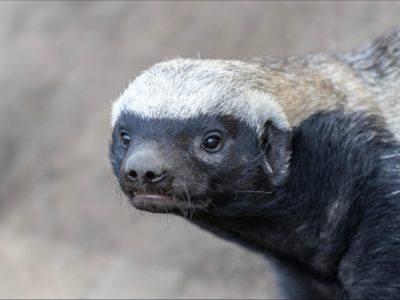
Honey Badger
One of earth's bravest creatures!

Horse
Has evolved over 50 million years!
Newest Animals that Start with the Letter H
The most recently added Animals that start with the letter H.
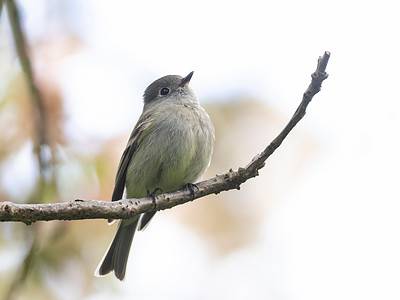
Hammond’s flycatcher
“Hammond’s flycatcher has a call known as a sharp peek!”
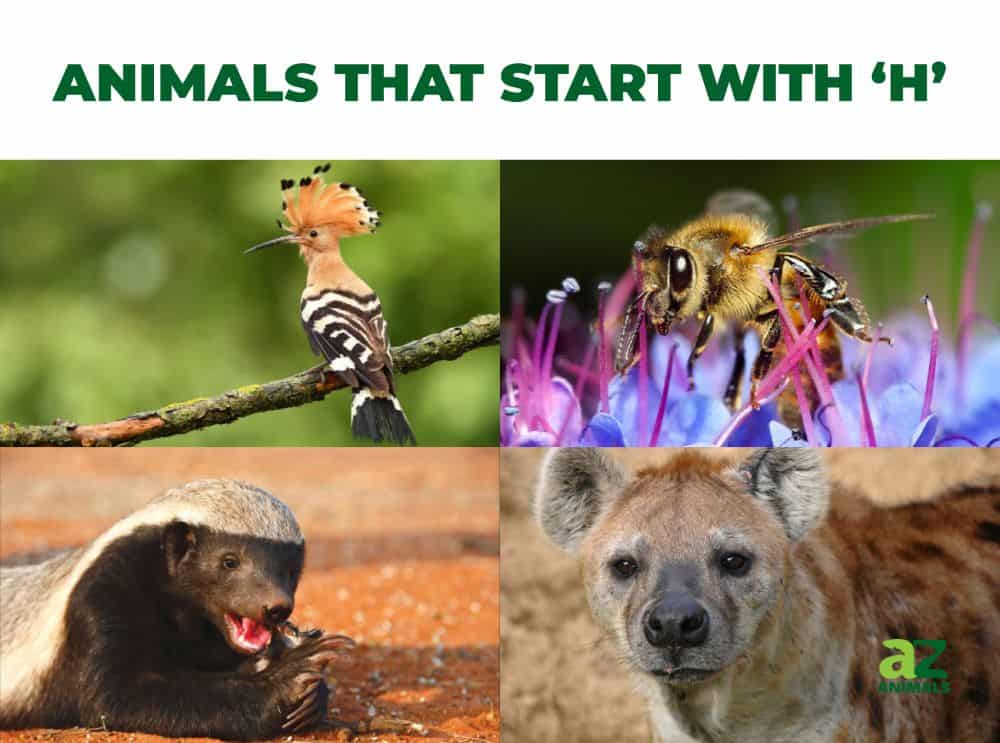
Animal by Letter Lists
- Animals that Start with A
- Animals that Start with B
- Animals that Start with C
- Animals that Start with D
- Animals that Start with E
- Animals that Start with F
- Animals that Start with G
- Animals that Start with H
- Animals that Start with I
- Animals that Start with J
- Animals that Start with K
- Animals that Start with L
- Animals that Start with M
- Animals that Start with N
- Animals that Start with O
- Animals that Start with P
- Animals that Start with Q
- Animals that Start with R
- Animals that Start with S
- Animals that Start with T
- Animals that Start with U
- Animals that Start with V
- Animals that Start with W
- Animals that Start with X
- Animals that Start with Y
- Animals that Start with Z
Thank you for reading! Have some feedback for us? Contact the AZ Animals editorial team.




